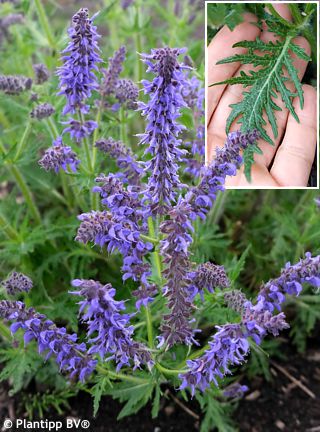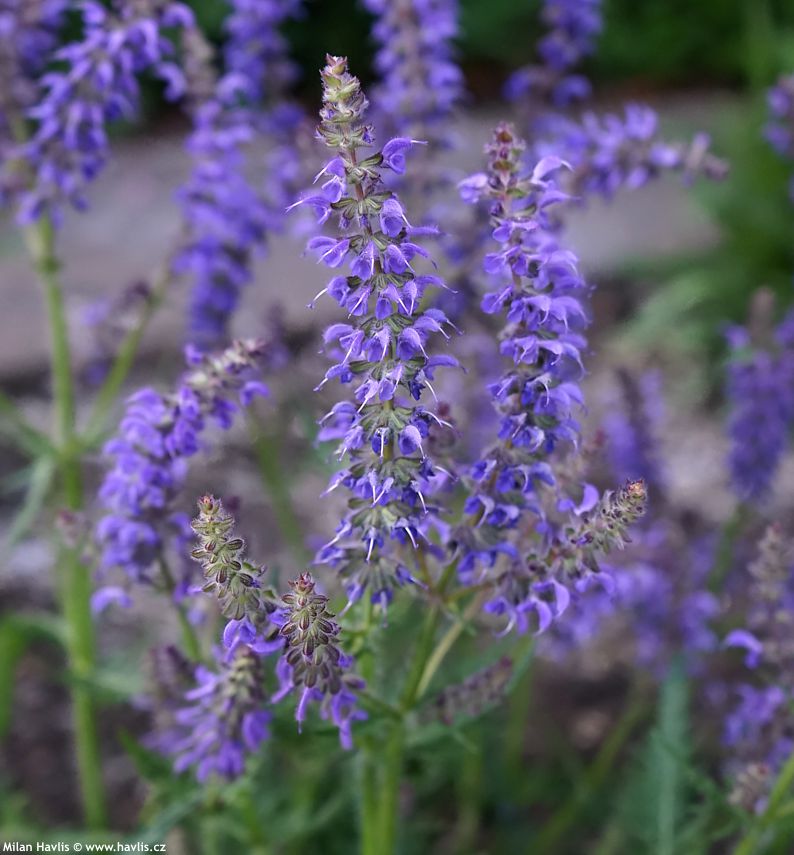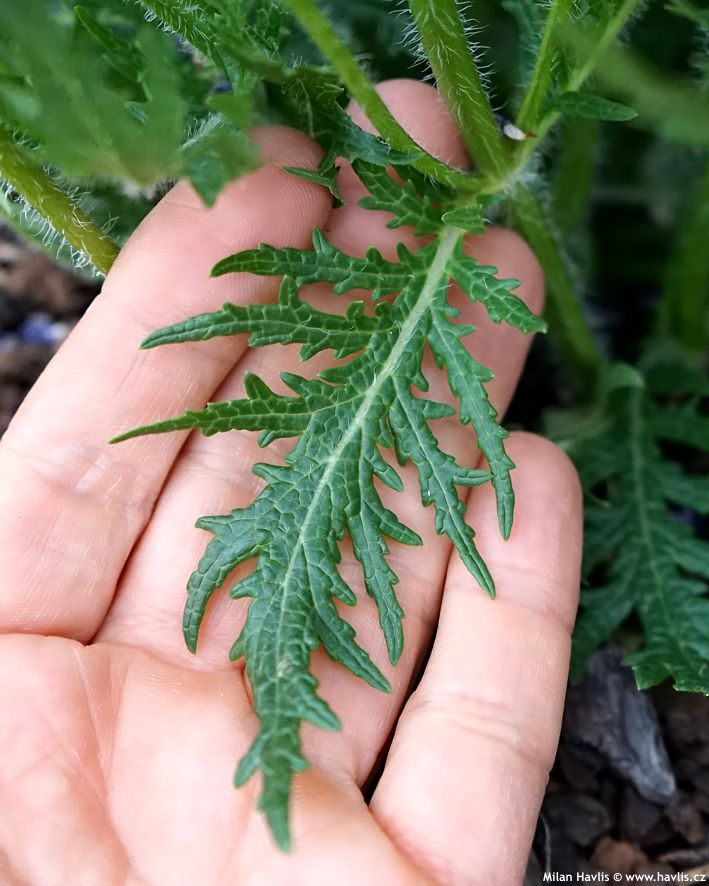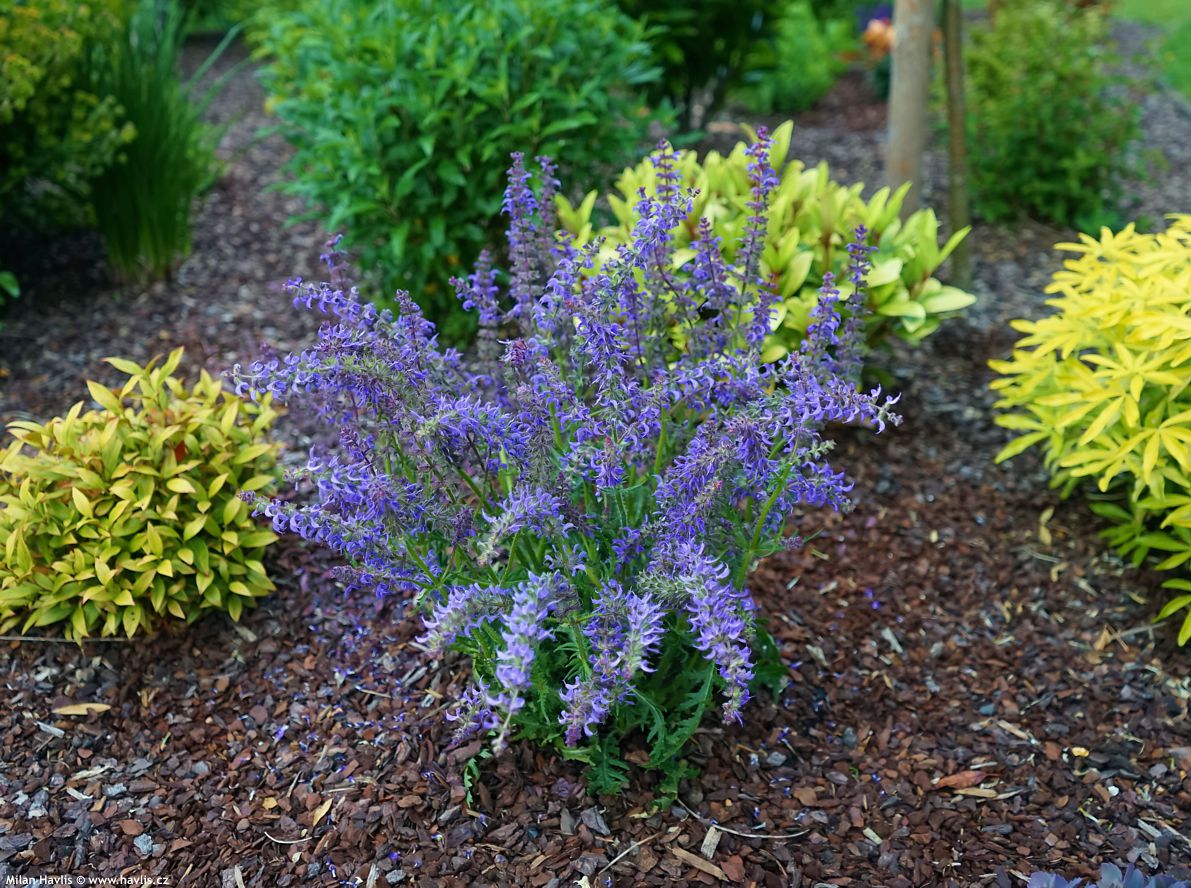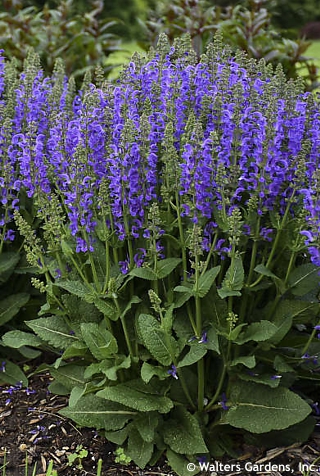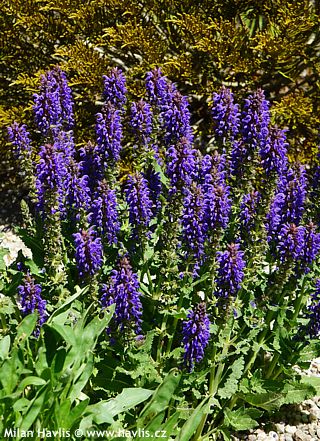Salvia 'Bocofpea' FEATHERS PEACOCK hybrid lavender sage
size/type
mid-sized perennial,mid-sized perennial
usual height
0,4-0,6m
usual width
0,3-0,4m
leaves
deciduous broadleaf
colour of leaves
flowers
showy
colour of flowers
blooming time
May-September
location
full sun
soil type
neutral to alkaline
soil moisture requirements
evenly moist but well-drained
USDA zone (lowest)
4 (down to -34°C)
winter protection
for zone 5+6

for zone 7

categorized
Salvia
Salvia is a large genus, containing about 900 species. In our climate mostly common (evergreen) sage is grown for culinary uses. Also popular are those of subtropical origin that are used here as annuals with long flowering season, especially in public areas. We concentrate on herbaceous perennials which are reliable and trouble-free plants offering stunning colour display with little care.Lavender sage, sometimes also called Macedonian sage given its origin, is a steppe perennial renowned for its high tolerance of various weather conditions as well as strongly scented foliage and stems. It is no wonder that Dutch breeder Kees Jan Kraan used it for his breeding program in order to obtain new sage varieties with unique leaves and extended flowering time. In 2018 he selected two significant varieties, one of which was named FEATHERS PEACOCK and was granted these patents: EU 59244 (2021 - Europe) and PP33993 (2022 - USA).
Description of the plant:
FEATHERS PEACOCK is a highly attractive hybrid lavender sage. It has unique foliage and unusual inflorescence. It blooms quite early, already in mid-May it makes up to 55 cm tall, hairy stems topped with slightly drooping spike-like inflorescences with large, lavender violet flowers. It blooms profusely producing both terminal and lateral inflorescences, and flowering continues until August. Then, usually when you remove spent flower stems, it reblooms on new, shorter stems. The leaves are dark green, glossy, and incised like a lace lace. They have a strong, slightly spicy scent.Sage will grow in almost any well-drained soil. For best results grow it in light, humus-rich, well-drained soil in full sun or very light shade. It needs no fertilizing, only in very poor or compacted soils it will benefit from occasional feeding with a balanced fertilizer. Lavender sage (and its hybrids) requires warm and free-draining soil. In early spring remove all above-ground parts except for rosette of new or over-wintered, healthy leaves lying flat on the ground. It is perfectly hardy to at least -34 °C (USDA zone 4) and will grow in outdoor pots, too.
Last update 19-06-2022
QUICK PRICE OVERVIEW
CURRENTLY SOLD OUT












